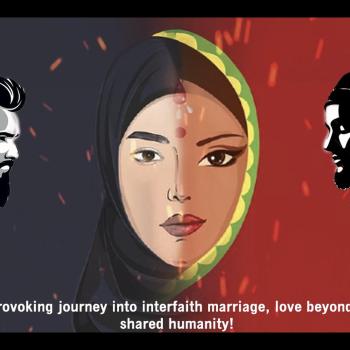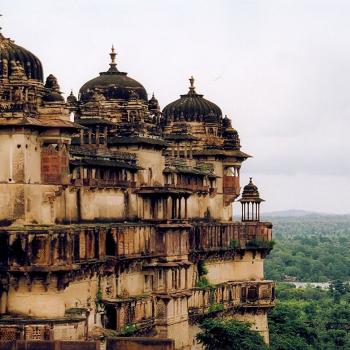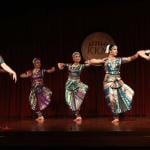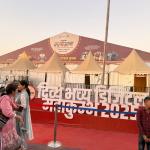Makar Sankranti is a festival held in celebration of the sun’s taking a northerly course in the heavens. This turn in the sun’s course takes place exactly at the point of time when he enters in the sign of ‘Makara’ of Capricorn. The precise moment varies from year to year. In the year 1914, for instance, the exact time of the sun’s change of course was 12 hours, 8 minutes, 18 seconds, Calcutta time. The Sanskrit term ‘Makara,’ however, does not signify what the Latin ‘Capricorn’ does, it means an ‘alligator’. But this difference in nomenclature is immaterial, for both names stand for the same section of the astronomical heavens. ‘Makara’ is also the Sanskrit name of the month which commences with the sun’s entrance into the sign of the zodiac called by that name, a month which is commonly called ‘Magh’ in these provinces. Makar Sankranti is thus a kind of New Year’s festival, marking the sun’s attainment of the most southern point in the ecliptic, and the commencement of the northerly course, or what in the technical terminology of astronomy is called “Uttarayana”.
Astronomically, the day is a new year’s day indeed, and it occurs within two weeks of the conventional New Year’s Day of the Western Gregorian calendar, for Makar Sankranti invariably falls on 14th of January each year, and 15th January on leap years. A new year’s day is a day of rejoicing everywhere in the world, and the ancient Indians observed their own in their own customary style, by a bath in the Ganga, followed by sober feasting. Of course, other parts of the country celebrate the new year at different times, for example Ugadi for Telugus and Baisakhi for Punjabis in April.
Makar Sankranti originally became a day of rejoicing as marking the termination of the inauspicious month of Paus or Poos which, in India, or at least in certain parts of it, is regarded as a time for asceticism rather than family-related matters. For this reason, sacred ceremonies of all kinds, and even the undertaking of journeys or the shifting of abode from one house to another, are forbidden in this month. Hence the last day of this month, or more precisely the first day of the next, is celebrated as a ‘festival of good cheer,’ notably in Bengal and in Southern India, in both of which places the day is observed by free indulgence in the eating of cakes, sweets, puddings, and other vegetarian delicacies, in the preparation of which the Indian housewife is a renowned specialist. These excellent dishes are known by a multiplicity of culinary names, but many of them have now become as mythical as .their origin, and survive only in their names.
In the United Provinces, the festival is popularly called Khichdi after a well-known Indian dish consisting of a mixture of rice and some kind of dal or cereal, and this article of food forms the standard dish of the day. The Indian Khichdi has many grades of quality, from the humblest to the highest, to suit all ranks. The Emperor Aurangzeb is said to have been particularly fond of one variety called ‘Biryani Khichdi.’ Uncooked Khichdi is also given in alms to the poor, and presented to servants and retainers accompanied by cash and sweets. These sweets, too, are of a prescribed order: they must contain an ingredient of sesame, the eating of which in some form is especially recommended in the month of Magh, as a prophylactic against chills.
Makar Sankranti is still one of the great bathing days in India. A bath at the confluence in Prayaga (Allahabad) on this day is believed to be fraught with incalculable spiritual merit, and this belief is perpetuated in an old saying: “On the day of an eclipse, bathe at Kashi (Varanasi) on the day of Makara, at Prayaga; and on the day of Ram Navami at Ayodhya”; these three baths being pre-eminently the holiest in the whole year. Makar Sankranti is the opening day of the annual religious fair at Allahabad, officially called the Magh Mela, which lasts for a whole month, during which crowds of the devout bathe in the Triveni every morning before sunrise and abstain from grain food during the day time, and reside in the close vicinity of the Ganga in thatch-built huts erected especially for this purpose.
These huts are built as near the water’s edge as possible, and the whole month of Magh is often spent in camp life on the river’s bank, this camp life being piously known as “Kalpavaas.” The length of residence is reduced in special cases, such as that of people who cannot afford, owing to pressing duties to spend a longer time out of home, and three days are in such exceptional cases held to be as good as thirty. The whole month of Magh is a bathing season, but particular days are marked out from the rest as specially important. These are, besides the Sankranti, (1) the Amavasya or new moon of Magh, (2) Basanta Panchami, or the fifth day of the light half of the same month, (3) Achala Saptami, or the seventh day of the same fortnight, (4) the Ekadashi, or eleventh day, which is always a sacred day, and (5) the Magha Pournami or full moon, after which the assemblage of bathers begins to break up.
The religious observances connected with this great bathing festival at Prayaga are laid down in an ancient work, called the Prayaga Mahatmaya, which is supposed to be a part of the Matsya Purana, a work dealing with the life and adventures of the Fish Incarnation of Vishnu. The bath must be preceded by an equally obligatory rite, the shaving of the head and facial hair which creates a powerful upsurge of energy within the human system. Men who have their father alive are exempted from the necessity of shaving off the moustaches, and women who have husbands, or maidens who are still unmarried, are not required to have their heads shaved. The same exemption appears to have been granted to or seized by persons who are permanent residents of Allahabad, presumably because their hair, whether cut at home or on the banks of the holy stream, is sure to find its way into the waters of the Ganga sometime or other during the rainy season. The Prayaga Mahatmaya promises release from ten thousand rebirths for every single hair above the chin which finds its rest in the Ganga. Rebirth is a painful process for the soul, but it must undergo this process in order that the sufferings of the flesh might absolve it from sin and make it fit again for that pure existence which it led prior to its appearance on earth in a fleshly garb.
Emancipation from the thralldom of the flesh is therefore a great reward for any man to covet. But the thousands and tens of thousands who annually assemble at Allahabad to bathe in the Ganga in the month of Magh, hardly ever bear the idea of spiritual merit as a distinctly conscious end in their minds; they traverse miles and miles of rough country, cheerfully enduring hunger, fatigue, and cold, plodding on their path from sunrise to sunset for weeks at a stretch, lying down by the roadside on the bare ground to pass the chilly night under a tree with no clothing but a coarse country blanket or a tattered razai (quilt), not because they can accurately measure the quantity or value of the spiritual good they are to reap from these toilsome marches, or from the bath which is. to come at the end of them, but only because they regard the whole as a simple duty – a duty that is laid upon them by their ancestors and from the performance of which, therefore, they expect no remuneration or reward, here or hereafter.
Ask any individual among the surging multitude why he has come to bathe, and he will tell you “because he ought to bathe.” This word ‘ought’ possesses a solemn meaning in the mind of a devout Indian, to whom a duty is a duty, the why and the wherefore of which it is not his business to inquire into or discuss. His whole duty, in the case of a duty, is to do it, without looking within for the motive, or without for the consequences, or even around for the approval or disapproval of the world. Let a Hindu be told by proper authority that such and such a thing is his duty (dharma), and nothing will shake his resolution or daunt his spirit. Difficulty, hardship, self-mortification, these act as allurements on the pious Hindu heart; and to be convinced of this paradox one has only to witness a Magh Mela and study the attitude of the myriads that flock to Prayaga by every available route, defying hunger and cold, disease and accident, for no other business than to bathe at the confluence of the Ganga and the Yamuna and to visit the shrine of Bharadwaja. For the one is held to be incomplete without the other, and hence throughout the bathing season one can see an unceasing stream of pilgrims passing between the Triveni and the temple of Prayaga’s presiding sage, Bharadwaja.
The exact origin of the Magh Mela is unknown, but from history we learn that king Harshavardhana used to hold at Prayaga a quinquennial fair at which people from all parts of northern India gathered. From a quinquennial event the Magh Mela seems to have subsequently become an annual event in view of its great social and religious advantages. Every twelfth year the Magh Mela is held at Allahabad on a colossal scale, and it is then called a Kumbha Mela. The last one was held in January 2013. The most important bathing day was February 14, on which the number of pilgrims that took their bath in the Ganga was officially estimated at eighty million. Kumbha, like Makara, is one of the signs of the zodiac, called Aquarius in Latin. According to the Skanda Pnmna when Jupiter and the sun enter the sign of Capricorn on a full moon, the Ganga at Prayaga and Haridwar becomes particularly sacred. On that auspicious day Prayaga or Haridwar must take its turn to hold the Kumbha Mela.
A mythological story gives the origin of the Kumbha fair as follows:-
During the churning of the ocean by the gods and the giants in the early days of the world there came out of the bed of the sea the god of medicine, Dhanwantari, with a vessel of nectar on his head. One of the gods, Jayanta son of Indra, tried to run away with the vessel, and the giants ran in pursuit of him. In the scramble and the scuffle the vessel of nectar fell at several places, notably at Prayaga, Haridwar, Ujjain and Nasik, and Kumbha fairs are held at each of these places at intervals of twelve years or so.
Uttarayana is also commemorated as the day on which Bhishma, the octogenarian leader of the Kuru forces in the Mahabharata, after discoursing for many days on the duties and mysteries of life and death as he lay wounded on the battlefield, pierced by innumerable arrows, emancipated his soul from the bondage of the body by an act of will. This does not mean that he committed what in law is called suicide. While the hour of death is unalterably fixed in the case of the majority of men, the pious soul that has all through life been in communion with God, acquires the power of releasing itself from the bondage of the body at will, that is, of prolonging life up to any limit it chooses, and also of terminating it at any point.
Bhishma had given a pledge to the Pandava chiefs that he would not fight “one who was a woman born,” and knowing that Sikhandin, who now opposed him, was such a one, he remembered his pledge, and at the sudden recollection his hands were automatically stayed in the very act of hurling a dart. His bow dropped from his hands, and Arjuna’s arrows pierced his body at all points. But still the hoary chief stood like a rock, bleeding and dizzy but still unmoved. At last feeling that his race was run, he fell down on the battlefield like a true Kshatriya warrior fighting to the last and without a murmur of pain, not even allowing the arrows sticking out of his body to be drawn out, but resting on these as on a couch. A military guard was placed round him as he lay awaiting his hour. By an exercise of his stupendous will power the sinless soldier held off the hour of death until the day of the full moon, and then he cheerfully yielded back his heroic spirit to his maker.















